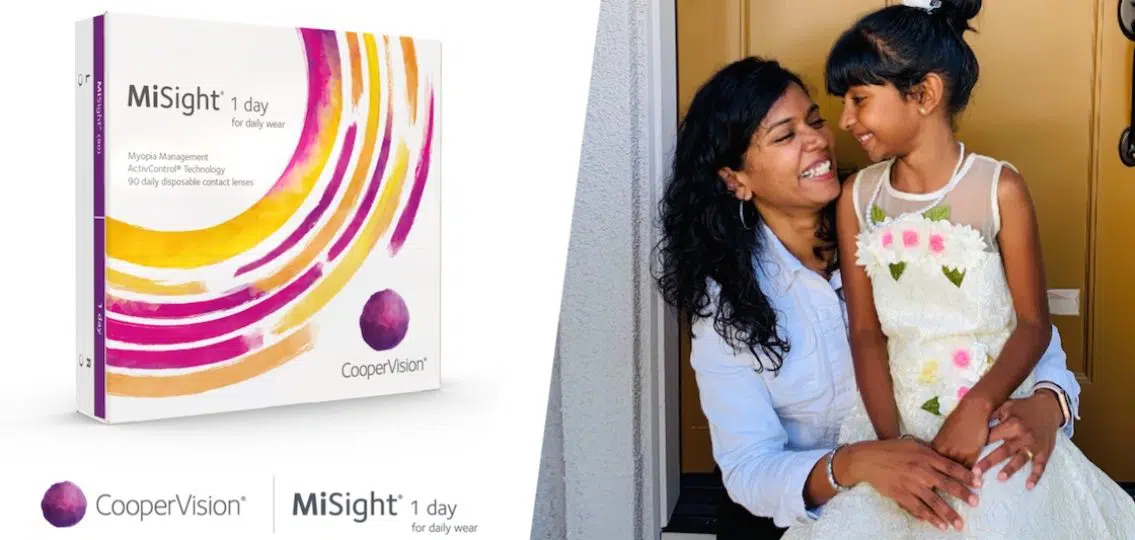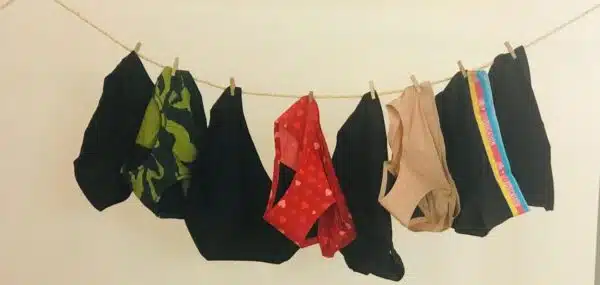Until it affected my family, I didn’t realize that unintentionally delaying vision care for your child could mean permanently worse vision for them in the long run. And you don’t have to wait until your kid fails an eye chart test at the pediatrician to take action.
For example, I didn’t find out until my daughter was 9 that she had a mild eye condition, only detected when our pediatrician got a new electronic tool that tested for the condition during her visit. We were quickly referred to an eye care specialist and began a treatment plan, but it would have been ideal to know about it sooner.
When Should Children Get Eye Exams?
The other surprise to me—and maybe to other parents, too—is that early treatment can also help another common vision condition, myopia, whose primary symptom is blurry distance vision (nearsightedness). Until recently, all I knew about myopia was that it meant my kid needed glasses. I didn’t know there was an option that may actually help slow the progression of the eye condition. But, in fact, there is: MiSight® 1 day soft contact lenses are the first and only FDA approved* product designed to slow the progression of myopia in children, aged 8- 12 at initiation of treatment.†1
Having two kids in glasses, I thought I was on top of what I needed to know about their vision care. But after talking with Dr. Justin Kwan, an optometrist at CooperVision, I learned there are other steps parents can take.
First, I wanted to know: Should all kids specifically visit an eye care professional to get a comprehensive eye exam? Absolutely, says Dr. Kwan. The American Optometric Association recommends an eye exam at 6-12 months (yes, as an infant!) and again at ages 3, 5, and 6.2 Many problems can’t be detected with simple eye charts or based on what the child says about their sight—and, importantly, time is often of the essence in addressing many potential problems in developing children. In other words, don’t wait for your kid to say, “Mom, I can’t see the board at school!” (This may or may not have happened to me.)
What Does Myopia Management Look Like?
But what if we’ve already reached the tween years, and they haven’t had a vision check yet? The good news is that between the ages of 8-12 is actually the prime time for detecting myopia and treating its progression. There are now contact lenses called MiSight® 1 day, the only FDA-approved* product proven to slow the progression of myopia in children, aged 8-12 at the initiation of treatment.†1 (MiSight® 1 day slowed myopia progression on average by 59% over a three year period in age-appropriate children.1)
I felt very reassured that it’s not too late to learn more about treating myopia for my 11-year-old daughter. “With myopia management, the earlier we can intervene, the better. Once the eye stretches longer, we can’t go back,” says Dr. Kwan. That was all the incentive I needed to make an appointment for her right away.
Steps Parents Can Take
Dr. Kwan explained that worsening myopia is not just a vision inconvenience; it increases the risk of serious eye health complications and sight-threatening conditions later in life.3,4 Knowing this, I asked if there is anything else parents can do to support our kids’ vision health.
In addition to considering myopia management with MiSight® 1 day, Dr. Kwan also recommends plenty of outdoor time for kids. There are numerous studies that show that time outside is a great thing when it comes to myopia, particularly when it adds up to at least 2 hours per day.5 “It doesn’t matter if it’s cloudy; getting enough outdoor light can actually minimize the chance of myopia developing,” says Dr. Kwan. “Lots of parents also ask about digital devices and their effect on eyesight,” says Dr. Kwan. “When children are using digital devices, it results in long-term, sustained focus for their eyes at a pretty close distance, which may have an impact on the development of myopia. So keep trying to reduce time on devices and get children outside.”6
The number one thing we parents can do is to reach out and make an appointment for a comprehensive eye exam to make sure our children see clearly and comfortably. I know for me, I want as much information as possible: If my child has a vision condition, I absolutely want to know about it—and start treatment for it—as soon as I can. Kids grow up fast.
Interested in learning more? To find an eye care provider who prescribes MiSight® 1 day contact lenses, visit here.
Indications and Important Safety Information:
RX Only
Results May Vary.
ATTENTION: Reference the Patient Information Booklet for a complete listing of Indications and Important Safety Information. *Indications: MiSight® 1 day (omafilcon A) soft (hydrophilic) contact lenses for daily wear are indicated for the correction of myopic ametropia and for slowing the progression of myopia in children with non-diseased eyes, who at the initiation of treatment are 8-12 years of age and have a refraction of -0.75 to – 4.00 diopters(spherical equivalent) with ≤ 0.75 diopters of astigmatism. The lens is to be discarded after each removal. Warnings: Problems with contact lenses could result in serious injury to the eye. Do not expose contact lenses to water while wearing them. Under certain circumstances MiSight® lenses optical design can cause reduced image contrast/ghosting/halo/glare in some patients that may cause difficulties with certain visually-demanding tasks. Precautions: Daily wear single use only. Patient should always dispose when lenses are removed. No overnight wear. Patients should exercise extra care if performing potentially hazardous activities. Adverse events: Including but not limited to infection/inflammation/ulceration/abrasion of the cornea, other parts of the eye or eyelids. Some of these adverse reactions can cause permanent or temporary loss of vision. If you notice any of the stated in your child, immediately have your child remove the lenses and contact your eye care professional.
† Compared to a single vision 1 day lens over a 3 year period.
1 Chamberlain P, et al. A 3-year randomized clinical trial of MiSight® lenses for myopia control. Optom Vis Sci. 2019; 96(8):556-567.
2 “Infant Vision: Birth to 24 Months of Age.” AOA.org. Accessed September 7, 2021. https://www.aoa.org/healthy-eyes/eye-health-for-life/infant-vision?sso=y.
3 Xu L, Wang Y, Wang S, Wang Y Jonas JB. ‘High Myopia and Glaucoma Susceptibility: The Beijing Eye Study. Ophthalmology, 2007;114(2):216-20.
4 Flitcroft DI. The complex interactions of retinal, optical, and environmental factors in myopia aetiology Prog Retin Eye Res. 2012;31(6):622-660.
5 Xiong S, Sankaridurg P, Naduvilath T, et al. Time spent in outdoor activities in relation to myopia prevention and control: a meta-analysis and systematic review. Acta Ophthalmol. 2017;95(6):551-566. doi:10.1111/aos.13403
6 Huang HM, Chang DS, Wu PC. The Association between Near Work Activities and Myopia in Children-A Systematic Review and Meta-Analysis. PLoS One. 2015;10(10):e0140419. Published 2015 Oct 20. doi:10.1371/journal.pone.0140419




